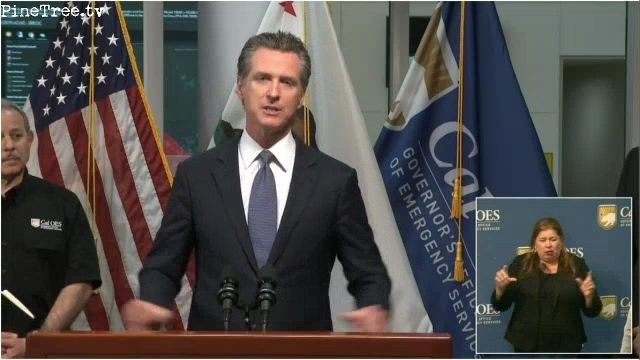Sacramento, CA…Governor Gavin Newsom today announced new initiatives to help Californians put healthy food on the table while also supporting the farm industry, which has been devastated by COVID-19. The Governor unveiled $3.64 million in new funding to expand the state’s Farm to Family program, including $2.86 million from the USDA and $775,000 committed by philanthropy to jumpstart a $15 million campaign to further support the program through the end of the year. The Governor also highlighted critical expansions of CalFresh and EBT programs to combat food insecurity for low-income Californians, including a new Pandemic-EBT program for children who receive free or reduced lunch and EBT for online purchasing.

“Putting food on the table during this pandemic is hard for families on the brink,” said Governor Newsom. “It’s in that spirit that we’re expanding our Farm to Family program while also working to connect low-income families with vital resources and financial support. We thank our farmers for stepping up to donate fresh produce to our food banks. And we want families struggling to access food to know we have your backs.”
Expanding California’s Farm to Family Program
The COVID-19 pandemic has created an unprecedented level of demand at California food banks—seeing a year-over-year increase in demand of approximately 73 percent. The first three weeks of April, CalFresh saw a 140 percent increase in the number of applications over the same time last year and almost overnight, California farmers and ranchers simultaneously saw their market decrease by 50 percent. The fresh produce industry supply chain has been especially hard hit because of the perishability of the products that must be harvested, shipped and consumed in a short period of time. Nationally, the specialty crop producers estimate losses thus far at $5 billion in cancelled or reduced contracts. California accounts for at least one-half of that estimate.
California’s Farm to Family program is a partnership between the California Department of Food and Agriculture (CDFA) and the California Association of Food Banks to facilitate food donations from farmers and ranchers by supporting food production, processing and distribution of the food supply chain. CDFA received approval from the USDA to redirect $2 million in unused Specialty Crop Block Grant funds to the California Association of Food Banks to offset the costs of picking, packing and transporting donated produce. An additional $861,854 from the USDA Farm to Food Bank program was awarded to the California Department of Social Services (CDSS) to support the program. Farm to Family partners with 41 food banks serving all 58 counties, and handles the logistics of packaging the food and communicating with food banks.
Roughly 128 farmers and ranchers are donating to the California Association of Food Banks and another 200 farmers have expressed interest in participating. In March, Farm to Family distributed 14.5 million pounds of fresh fruits and vegetables and in the first three weeks of April, distributed 18 million pounds of food. These funds will support the donation of 21 million pounds of fresh crops for the month of May.
Additionally, $775,000 in private funds have been secured for the California Association of Food Banks to help provide a bridge to local food banks to be able to meet the increased demand through the end of May. This funding comes from three donors: Kat Taylor, Farm Credit/CoBank and an anonymous donor – and will be leveraged to launch the $15 million campaign to support the Farm to Family program through the end of the year.
Combatting Food Insecurity through Expanded EBT Programs
The Governor also announced today that CalFresh recipients will receive the maximum benefits for the month of May. The continued expansion of benefits was secured through a USDA waiver that allows all households to receive the maximum allowable benefit amounts, and is a continuation of the same level of benefit received in March and April. On April 12, just over 1.3 million households received a total of nearly $223 million in additional CalFresh benefits with an average increase of $169 per household.
Families with children eligible for free or reduced price meals are eligible to receive additional support thanks to the Pandemic Emergency Benefits Transfer Program (P-EBT). The California Department of Social Services has identified roughly 3.8 million children who could qualify, and each eligible child could receive up to a total of $365 in P-EBT benefits. P-EBT eligible children that receive CalFresh, Medi-Cal, or Foster Care benefits do not need to apply for P-EBT benefits and will receive a P-EBT card in the mail in early May. Other families receiving free or reduced lunches but not in CalFresh will need to complete a short online application, which will open in late May. The state estimates that it will issue up to $1.4 billion to these kids for school closures extending from March 16, 2020 through June 12, 2020.
Finally, the Governor announced the launch of the EBT for online purchasing. California expedited implementation of this program in response to COVID-19. Participants can now use their EBT card to make purchases online at Amazon.com and Walmart.com – and California is urging supermarkets to also join. Purchases can be completed online with CalFresh food benefits and P-EBT benefits.
###


